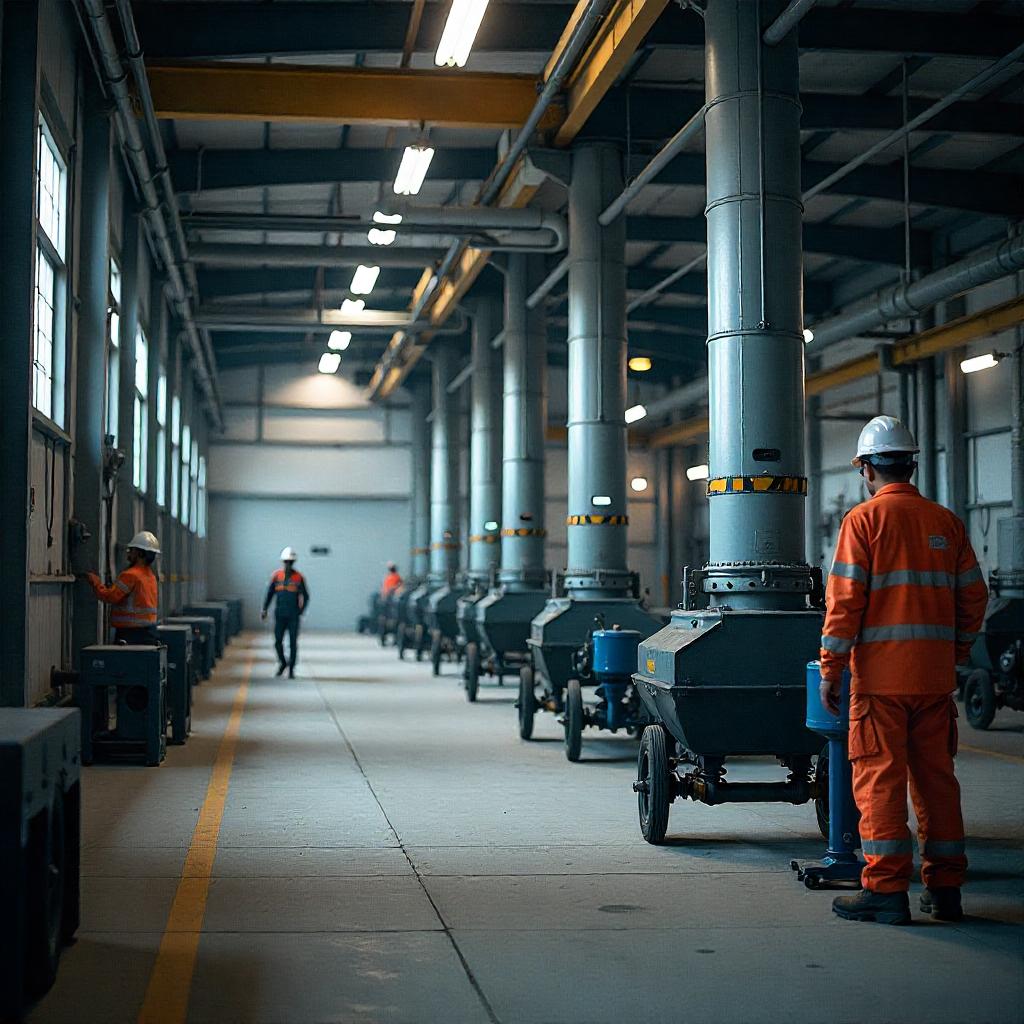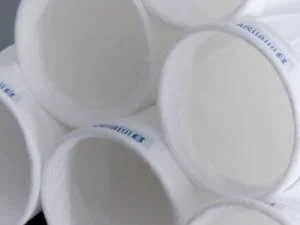Changni yig'ish tizimi nima?
A dust collection system is a setup used in industrial settings to remove dust and other particles from the air. Its main job is to keep the air clean by capturing dust before it spreads. This system is important because it helps to protect workers and the environment.
Maintaining clean air is essential for several reasons:
- Health Benefits: Clear air reduces the risk of respiratory issues for workers. Breathing in dust can cause problems like asthma and other lung diseases.
- Safety: Dust can create slippery surfaces and increase the risk of fires or explosions. A dust collection system helps to prevent these hazards.
- Product Quality: Clean air means that products are less likely to get contaminated by dust, which leads to better quality in manufacturing.
Overall, a dust collection system plays a vital role in ensuring a safe and healthy workplace. It helps to keep the air clean, which benefits both workers and the industry.
Key Components of a Dust Collection System
A dust collection system has four key components: exhaust hoods, ductwork, dust collectors, and fans. Each part plays an important role. They work together to keep the air clean and safe.
- Exhaust Hoods: Exhaust hoods capture dust and other particles at their source. They are placed above machines that create dust. When the machine runs, the hood collects the dust before it spreads into the air.
- Kanal tarmog'i: Ductwork is a network of pipes that transport the dust from the exhaust hoods to the dust collectors. The ductwork is designed to move air quickly and efficiently. Good ductwork helps keep dust from escaping back into the room.
- Dust Collectors: Dust collectors are large machines that remove dust from the air. They filter out the dust particles and collect them in a container. This way, the air that goes back into the room is clean. Dust collectors are essential for good air quality.
- Fans: Fans help move air through the entire system. They create suction to pull air from the exhaust hoods into the ductwork and then into the dust collectors. Fans ensure that the dust collection system works effectively.
Together, these components create a dust collection system that improves air quality. They reduce the amount of dust in the air, making it healthier for everyone.
Understanding Dust Collection System Diagrams
Understanding dust collection system diagrams is important for anyone working with these systems. Diagrams help show how the system is set up and how the dust flows through it. They make it easier to see where each part goes and how everything connects.
These diagrams aid in system design by allowing engineers to plan the layout. They can see where the ducts, filters, and fans should be placed. This helps to create an efficient system that captures dust effectively.
Diagrams also help with troubleshooting. If there is a problem, a diagram can show where to look for issues. It helps workers find blockages or leaks quickly. They can follow the flow of dust to see if anything is not working right.
Here is a simple example of a dust collection system diagram:
- Ducts: The pipes that carry dust away from the machines.
- Chang yig'uvchi: The main unit that collects the dust.
- Filtrlar: These clean the air before it goes back into the room.
- Fans: They help move the air and dust through the system.
By using diagrams, everyone can understand how the dust collection system works. It makes both design and fixing problems easier for everyone involved.
Chang yig'ish tizimlarining turlari
Dust collection systems help to clean the air in factories and workshops. They capture dust and other particles to keep the environment safe and healthy. There are different types of dust collection systems. Each type has its own pros and cons.
Bagajlar are one type of dust collection system. They use fabric bags to filter dust from the air. The air passes through the bags, and the dust gets trapped inside.
Afzalliklar of baghouses include:
- High efficiency in capturing small particles.
- They can handle large air volumes.
Kamchiliklari of baghouses include:
- Ularni o'rnatish qimmatga tushishi mumkin.
- They require regular maintenance to keep bags clean.
Siklonlar are another type of dust collection system. They use a spinning motion to separate dust from the air. As air enters the cyclone, the dust spins out and falls into a container.
Afzalliklar of cyclones include:
- They are simple and cheap to operate.
- They do not need filters, which means less maintenance.
Kamchiliklari of cyclones include:
- They are less effective for very small dust particles.
- They may not capture all types of dust.
Nam tozalagichlar are also used for dust collection. They spray water or a liquid solution to trap dust particles. The water helps to wash away the dust from the air.
Afzalliklar of wet scrubbers include:
- They can capture very fine particles.
- They also help to remove gases and odors.
Kamchiliklari of wet scrubbers include:
- They require a lot of water.
- They can be more complex to operate.
Here is a simple table to compare these dust collection systems:
| Turi | Afzalliklar | Kamchiliklari |
| Bagajlar | High efficiency, handles large volume | Expensive, requires maintenance |
| Siklonlar | Simple, cheap to operate | Less effective on small particles |
| Nam tozalagichlar | Captures fine particles, removes gases | Needs a lot of water, complex to operate |
Each type of dust collection system can be useful in different situations. Choosing the right one depends on the specific needs of the facility.
Designing an Efficient Dust Collection System
Designing an efficient dust collection system is important for clean air and safety. Here are some steps to help in creating a good system:
- Determine Airflow Needs: Start by finding out how much airflow is needed. This depends on the type of tools and materials used. Each tool has a specific airflow requirement.
- Choose the Right Duct Size: Next, select the right duct size. Bigger ducts can carry more air, but they also take up more space. Smaller ducts save space but can limit airflow. Balance is key.
- Select Quality Filters: After that, choose filters that can catch dust and particles effectively. High-quality filters trap smaller particles and keep the air cleaner.
- Plan Duct Layout: Create a plan for the duct layout. Short, straight ducts work best. Avoid sharp turns as they slow down airflow.
- Consider Noise Levels: Think about noise when designing the system. Some machines can be very loud. Adding soundproofing can help reduce noise.
- Think About Maintenance: Design for easy maintenance. Filters need to be cleaned or replaced. Make sure reaching them is simple.
- Get Professional Help: Finally, it is important to consult with a professional. They can provide advice and ensure the system works well. Their expertise can save time and money in the long run.
By following these steps, one can design an efficient dust collection system that keeps the workspace safe and clean.
Common Challenges and Solutions
Common challenges can happen with heating and cooling systems. These challenges include inadequate airflow, filter clogging, and system leaks. Knowing these issues helps people keep their systems working well.
Inadequate airflow can make a room feel uncomfortable. This issue happens when there are blockages or problems with the fan. To solve this, check the vents and remove any objects that block the airflow. Cleaning the fan can also help improve airflow.
Filter clogging is another common issue. When filters get dirty, they cannot trap dust and dirt. This makes the system work harder and can lead to breakdowns. To solve this, change the filter every one to three months. This keeps the air clean and the system running smoothly.
System leaks can cause serious problems. Leaks can happen in the ductwork or the units themselves. This can lead to lower efficiency and higher bills. To fix leaks, inspect the ductwork for holes or cracks. Sealing these leaks can save energy and improve performance.
Regular maintenance can prevent many of these challenges. Schedule a yearly check-up with a technician. This helps catch problems early and keeps the system in good shape.
Case Study: Successful Implementation of a Dust Collection System
A dust collection system helps keep the air clean in factories and workshops. One real-world example of a successful dust collection system comes from a furniture manufacturing company. They needed to reduce dust to protect workers and improve air quality.
- Planning Phase: The company started by assessing its dust problem. They measured how much dust was in the air and where it came from. They found that most dust came from cutting and sanding wood. They decided to install a dust collection system to fix this issue.
- Choosing the System: Next, the company looked for the right dust collection system. They researched different types and talked to suppliers. They chose a system that could handle large amounts of dust and fit their budget. They also made sure it was easy to maintain.
- Installation Phase: The company prepared for installation. They cleaned the work area and made space for the new system. Then, they hired a team to install it. The team set up the system with ductwork connected to the machines. They made sure everything was safe and working well.
- Training Workers: After installation, the company trained workers on how to use the dust collection system. They showed workers how to turn it on and off and how to check for clogs. Workers learned the importance of using the system to keep the air clean.
- Results: The results were impressive. The air quality improved significantly. Dust levels dropped, making the workplace safer. Workers felt better and could breathe easier. The company also noticed an increase in productivity because machines ran more smoothly without dust build-up.
The successful implementation of a dust collection system helped the furniture manufacturing company protect its workers and create a cleaner work environment.
Xulosa
Understanding dust collection system diagrams is very important. These diagrams show how dust is collected and kept away from work areas. This helps create a safe and healthy environment for everyone. When workers breathe in dust, it can cause health problems. Good dust collection systems reduce these risks.
Experts, like Intensiv-Filter Himenviro, can help find the best solutions for specific needs. They know how to design systems that work well for different types of industries. It is wise to consult with them for tailored advice.
If someone wants to improve their dust collection systems, they should reach out to professionals. Seeking expert advice can lead to better safety and health at work.



